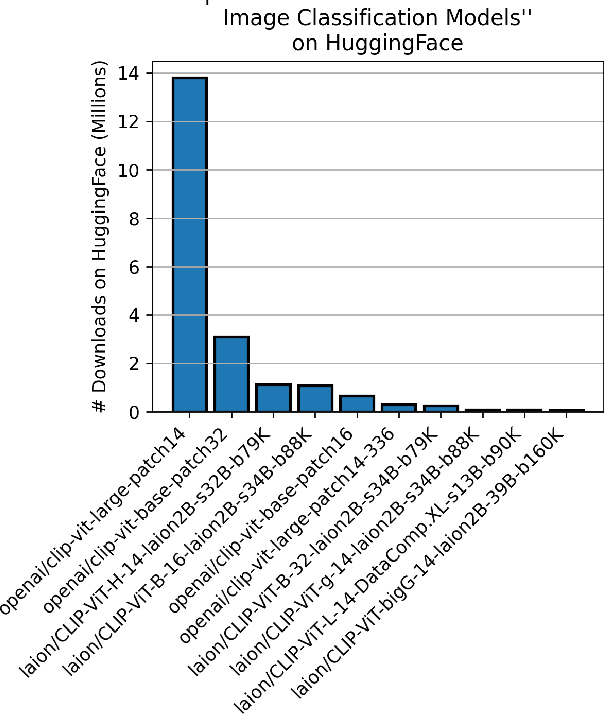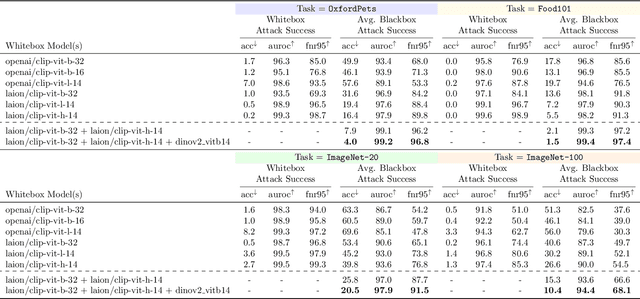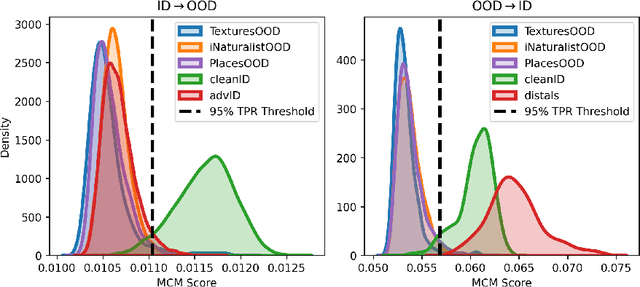Adversarial Attacks on Foundational Vision Models
Paper and Code
Aug 28, 2023



Rapid progress is being made in developing large, pretrained, task-agnostic foundational vision models such as CLIP, ALIGN, DINOv2, etc. In fact, we are approaching the point where these models do not have to be finetuned downstream, and can simply be used in zero-shot or with a lightweight probing head. Critically, given the complexity of working at this scale, there is a bottleneck where relatively few organizations in the world are executing the training then sharing the models on centralized platforms such as HuggingFace and torch.hub. The goal of this work is to identify several key adversarial vulnerabilities of these models in an effort to make future designs more robust. Intuitively, our attacks manipulate deep feature representations to fool an out-of-distribution (OOD) detector which will be required when using these open-world-aware models to solve closed-set downstream tasks. Our methods reliably make in-distribution (ID) images (w.r.t. a downstream task) be predicted as OOD and vice versa while existing in extremely low-knowledge-assumption threat models. We show our attacks to be potent in whitebox and blackbox settings, as well as when transferred across foundational model types (e.g., attack DINOv2 with CLIP)! This work is only just the beginning of a long journey towards adversarially robust foundational vision models.
 Add to Chrome
Add to Chrome Add to Firefox
Add to Firefox Add to Edge
Add to Edge